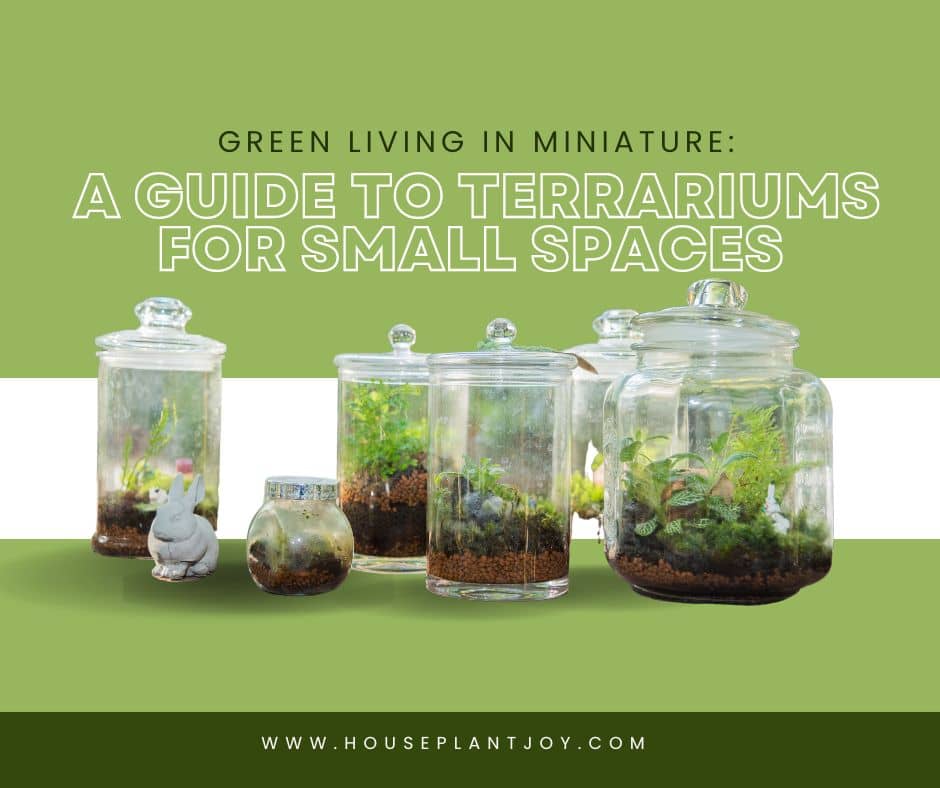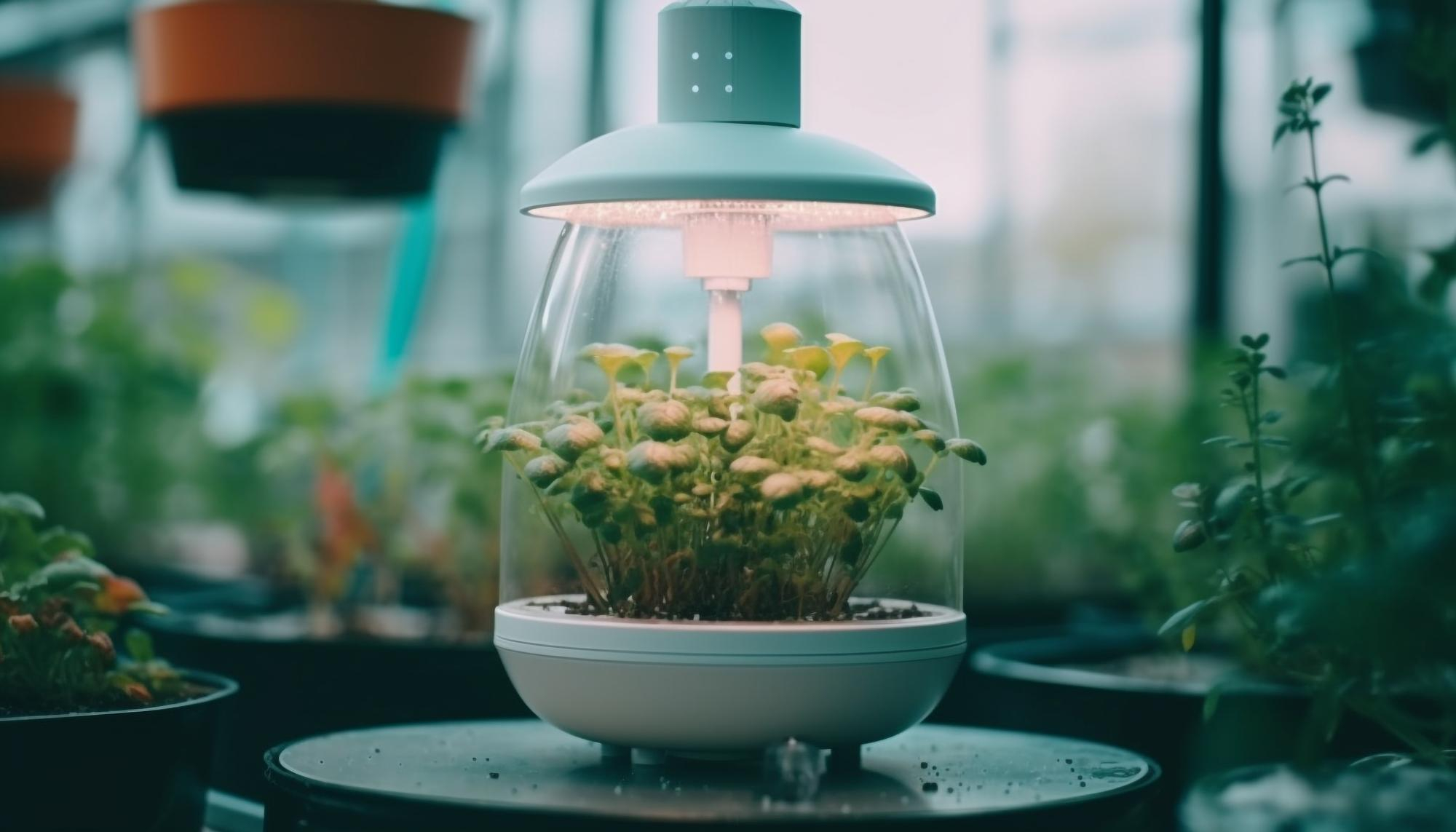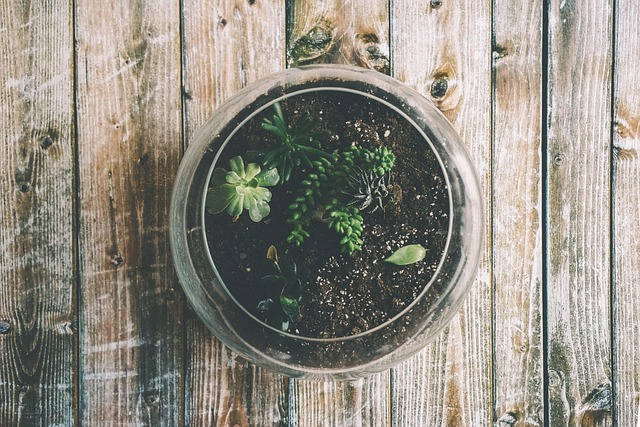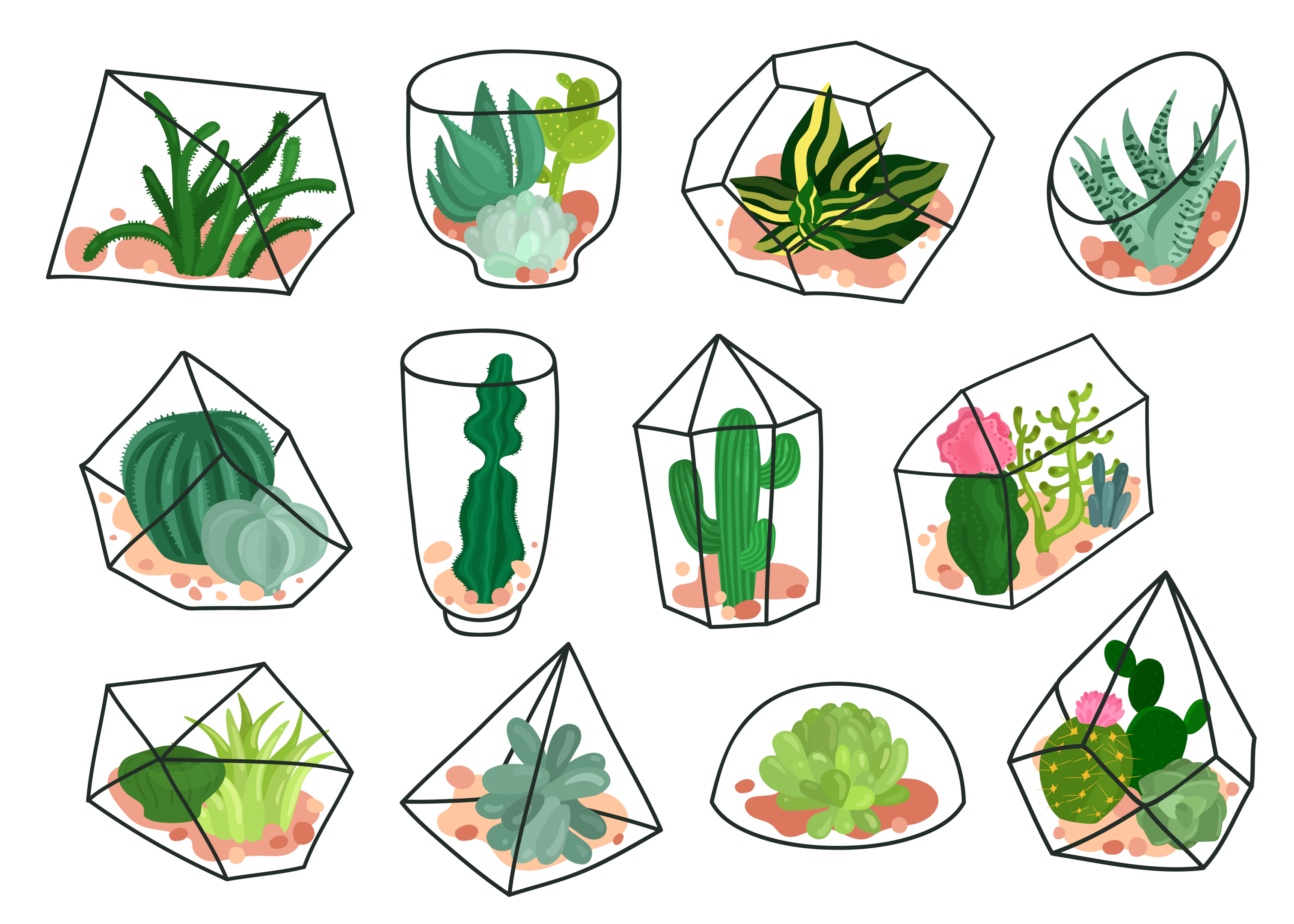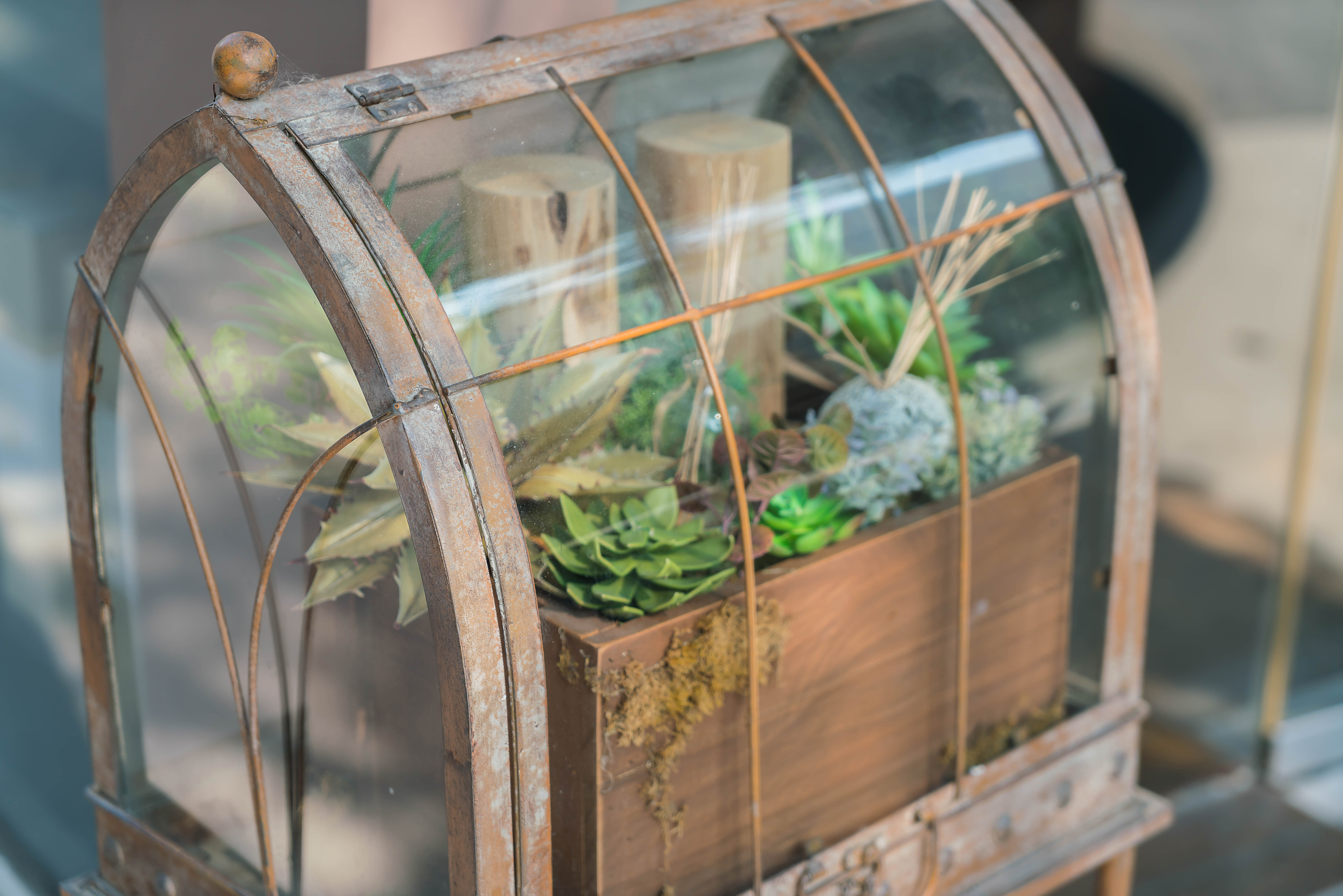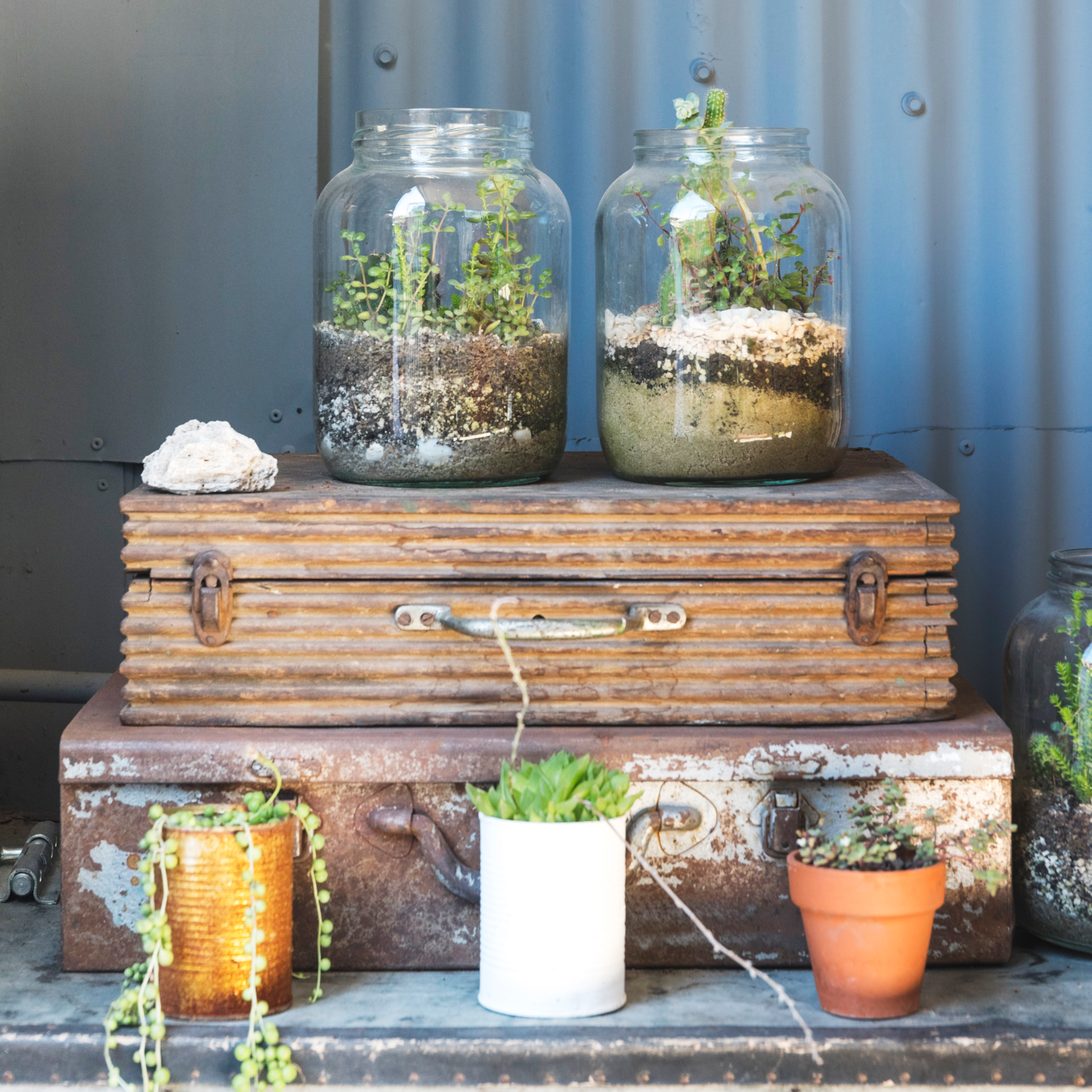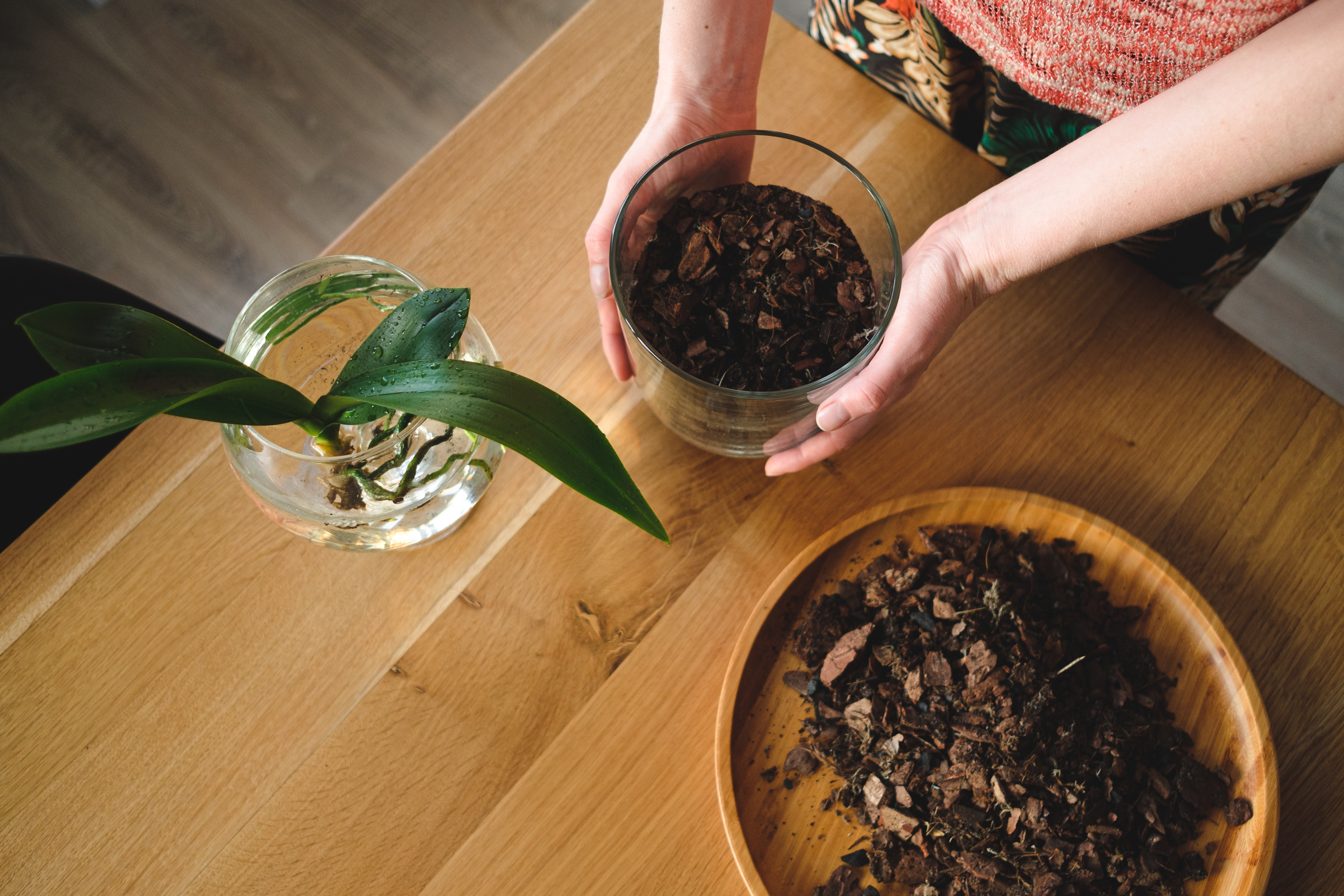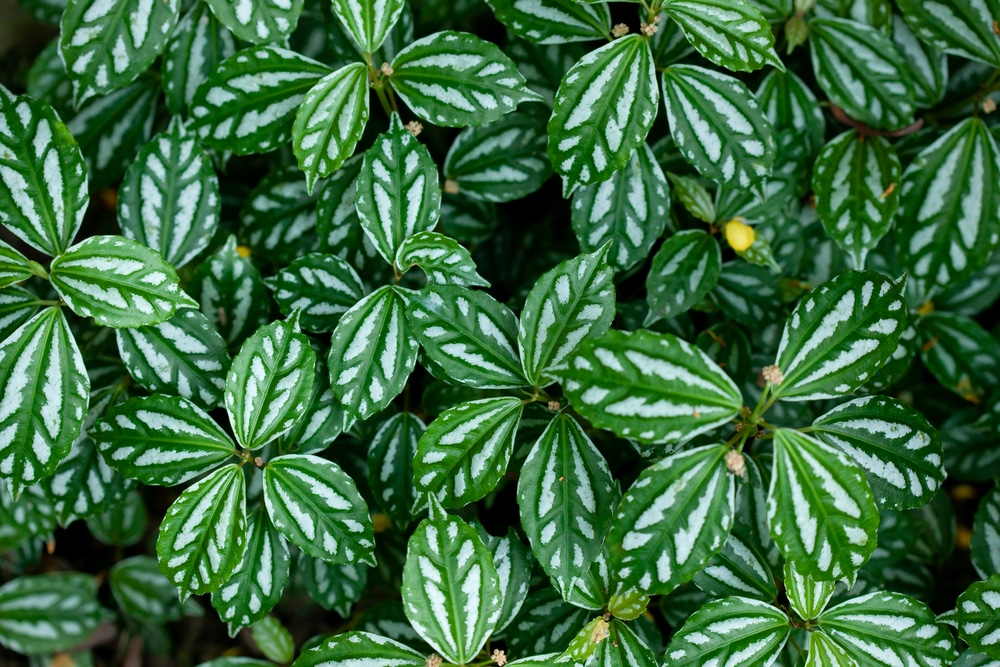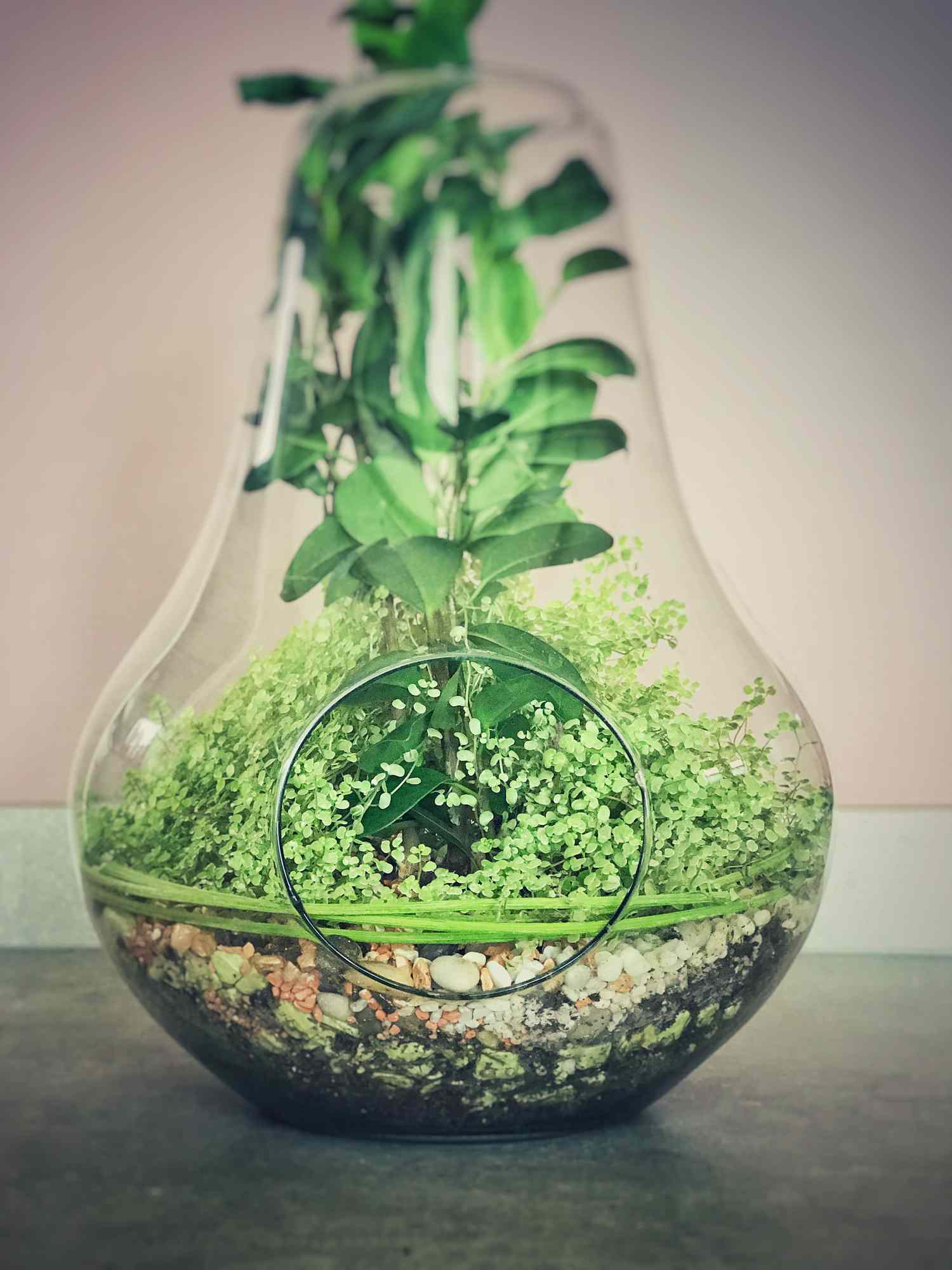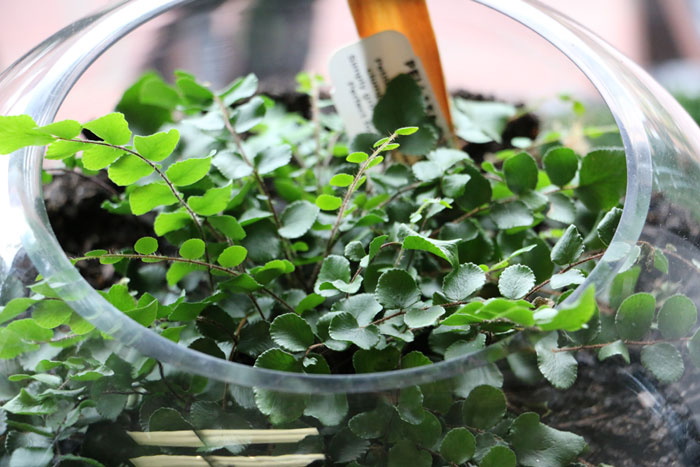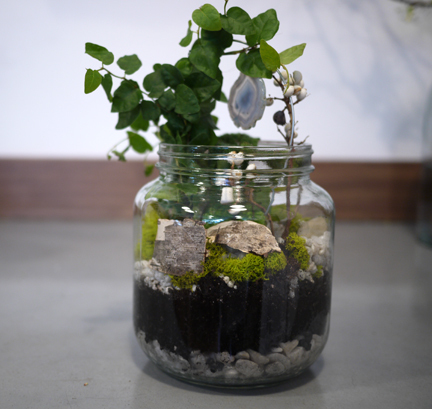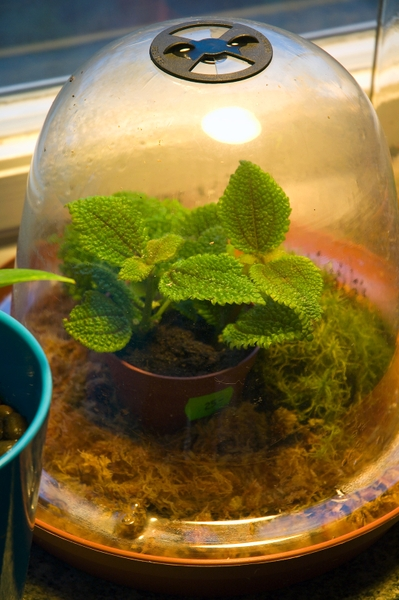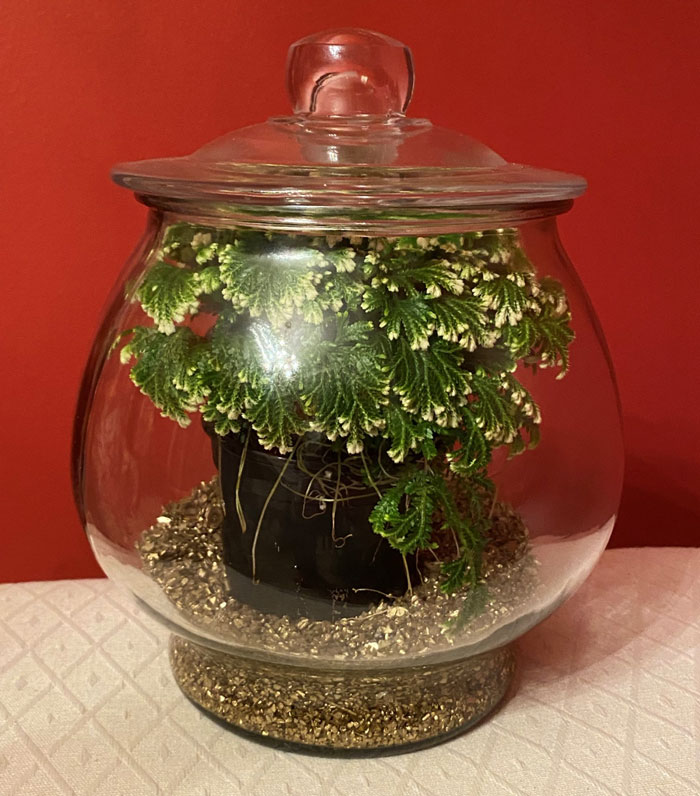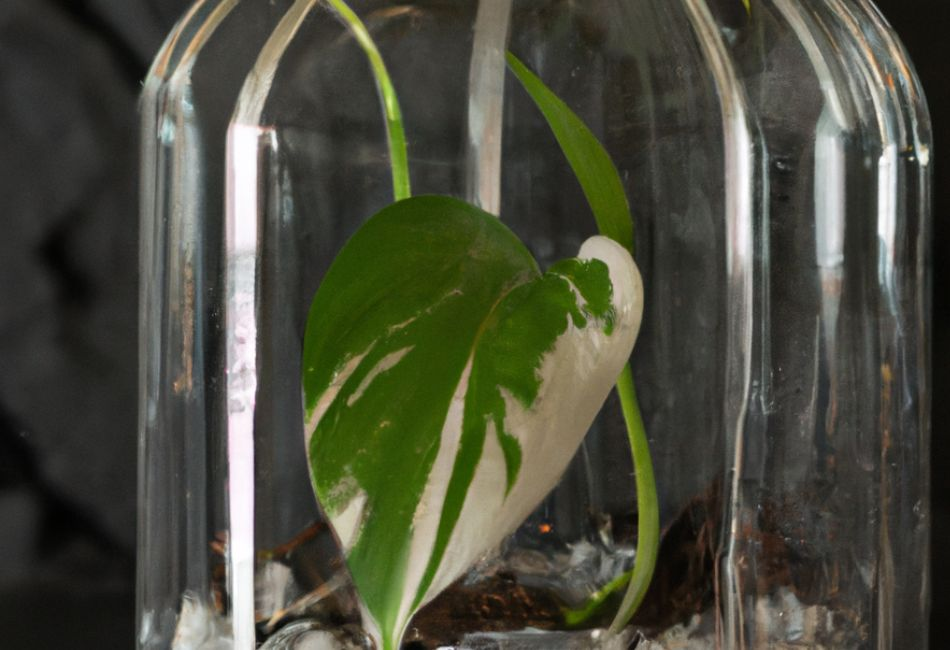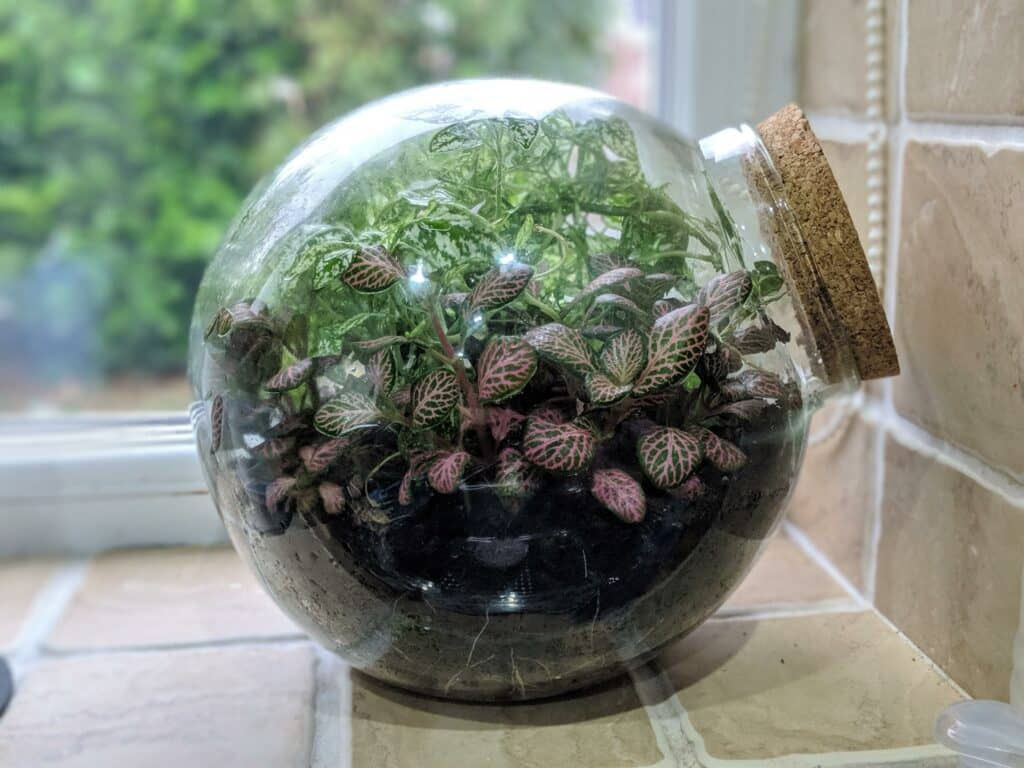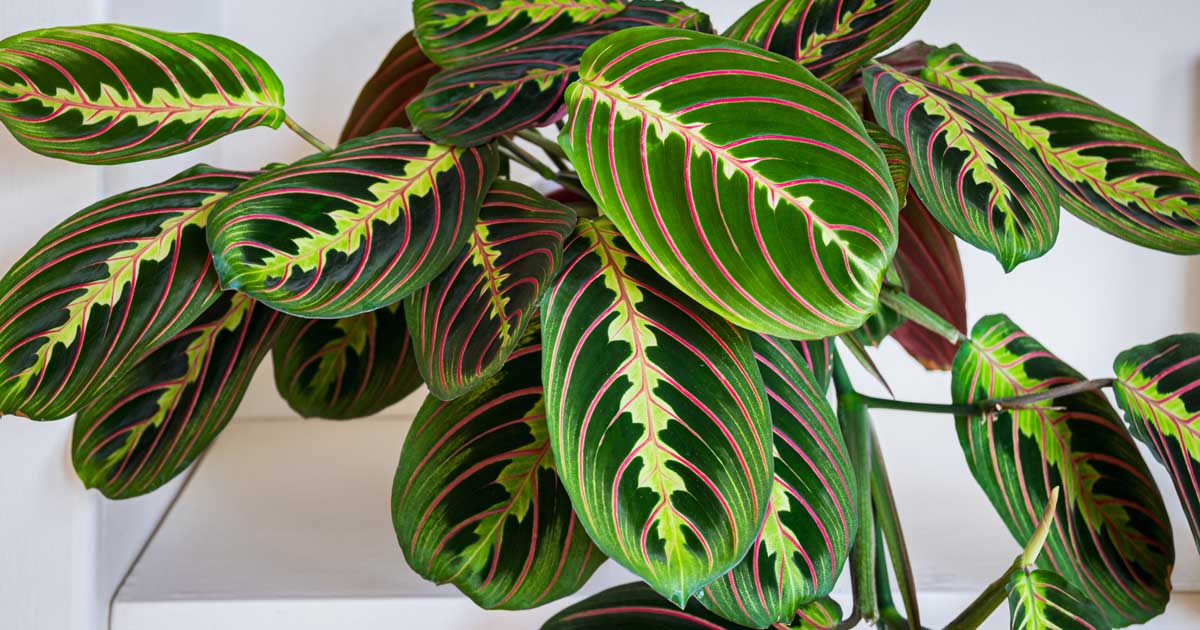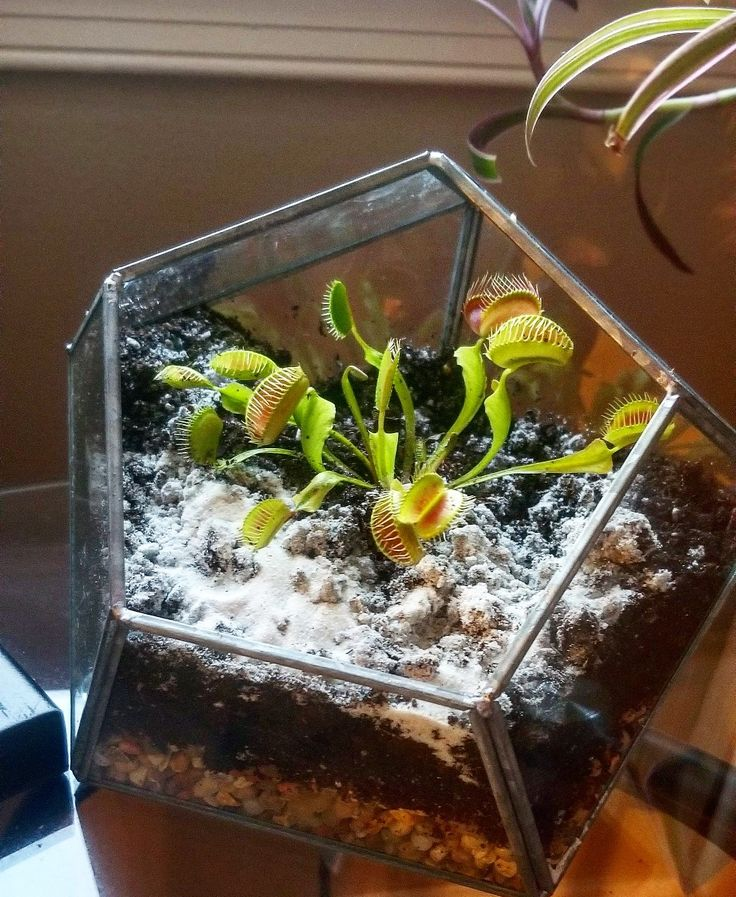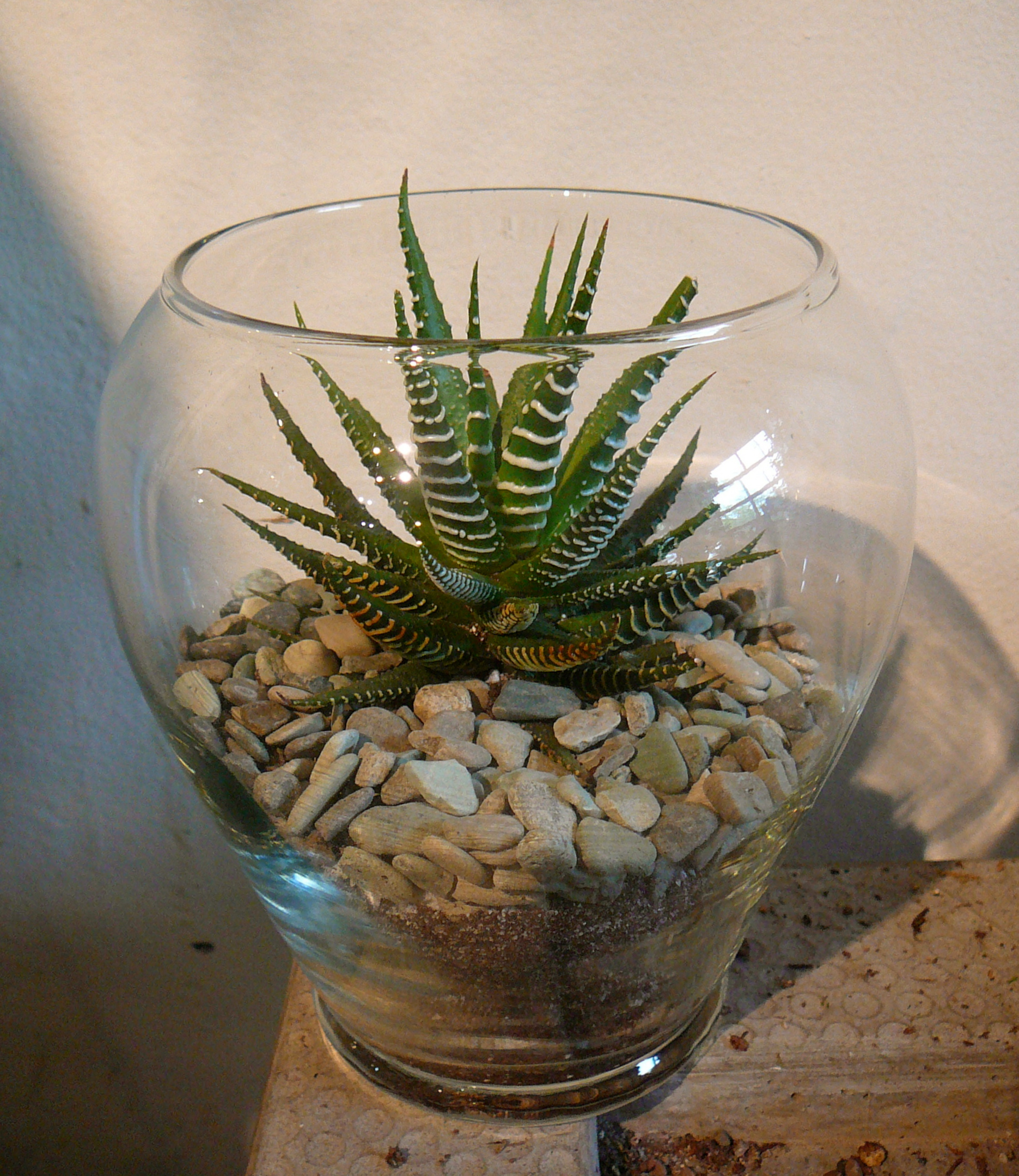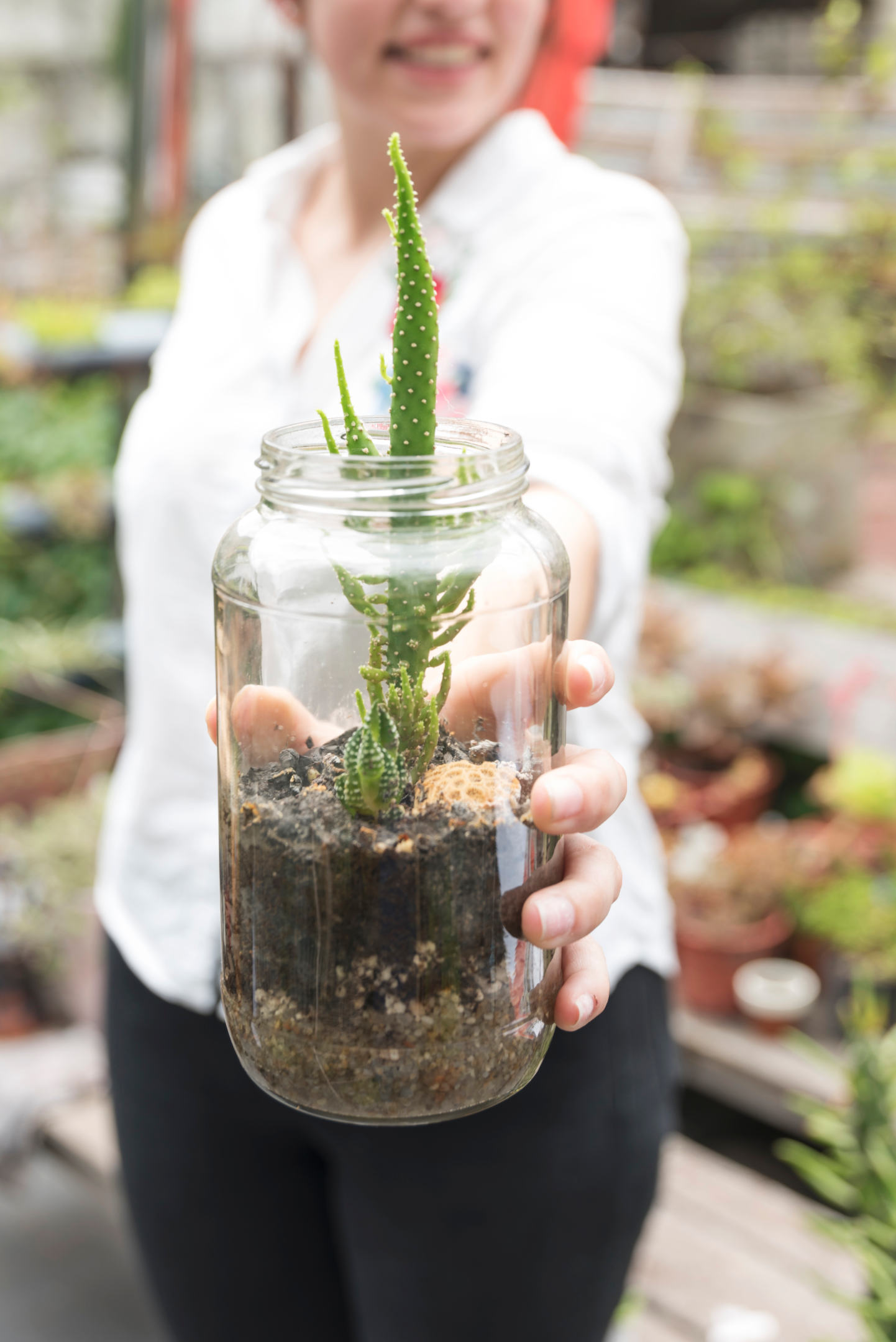HousePlantJoy is supported by our audience. When you purchase through one of our links, we may earn a small affiliate commission. As an Amazon Associate I earn from qualifying purchases. Your cost is not affected.
==================
Welcome to the world of green living in miniature! In our fast-paced, urban lifestyles, space often comes at a premium. But that doesn’t mean you have to sacrifice the joys of gardening and enjoying nature. In this article, we’ll explore how to bring the beauty of plants and ecosystems into the coziest corners of your home or office. Whether you’re a seasoned green thumb or a complete novice, this guide will show you how to create stunning, low-maintenance terrariums that thrive in limited spaces. Let’s dive in and discover the wonderful world of mini ecosystems that can transform your surroundings into lush pockets of nature.
What Exactly is a Terrarium?
Think of a terrarium as a tiny, self-sustaining small garden enclosed within a see-through container. The containers can be crafted from either glass or plastic and are available in various sizes and shapes, spanning from small glass jars to more sizable display cases. The magic of terrariums lies in their ability to recreate natural habitats, giving plants the perfect cozy spot to grow and flourish, all within a sealed or partially sealed space.
A terrarium allows you to grow many small plants, like popular succulents, delicate moss, lush ferns, tropical beauties, and even air plants. The plant selection depends on the type of terrarium and the specific environment you want to create.
Why Terrariums Are Good for Small Spaces
Terrariums are an excellent choice for small spaces because they’re like nature havens that you can put on your windowsill, shelf, or table.
But there’s more to love about terrariums in small spaces:
- Easy-Peasy: Once your terrarium setup is done, it’s a breeze to maintain. Remember to water it occasionally and crack it open for fresh air.
- Budget-Friendly: You won’t empty your wallet creating one. All your needed stuff can be grabbed from your local nursery or in your home.
- Indoor Nature: Besides looking cool, terrariums can freshen your indoor air and create a calm, Zen-like vibe.
- Fun Hobby Alert: Making a terrarium isn’t just about decoration – it’s like having your little science experiment; you can make it in a different, unique shape. You’ll learn about plants and ecosystems, making it an enjoyable and educational hobby.
So, if you’re itching to bring some green into your small space without feeling cramped, give terrariums a shot. They’re pleasing to the eye but also super low-maintenance and customizable to match your style.
Types of Terrariums
The basic types of terrariums are closed, and open terrariums, but different types of terrariums cater to specific preferences. Here are types of terrariums.
Closed Terrariums
Imagine a terrarium that’s like a mini jungle under glass, sealed with a lid. This lid works its magic by locking in moisture, creating a humid environment perfect for plants that love extra humidity, like ferns and tropical beauties. It’s like having a piece of the rainforest right on your shelf.
Open Terrariums
If you’re more of a “let’s get some fresh air in here” kind of plant parent, open terrariums are the way to go. They don’t have a lid, allowing plenty of air circulation. This makes them an excellent choice for plants that prefer more ventilation, like those trendy succulents and cacti.
Other Types of Terrarium
- Desert Terrariums: Picture a terrarium that’s all about recreating the dry, sandy vibes of the desert. These typically have a sandy substrate and are home to plants that thrive in arid conditions, such as cacti and succulents. If you’ve got a thing for the desert’s stark beauty, this type might be your desert oasis.
- Rainforest Terrariums: On the flip side, we’ve got terrariums that aim to mimic a rainforest’s lush, moist environment. With a substrate that’s always a bit damp and filled with plants native to tropical rainforest regions, like ferns and tropical wonders, they bring the jungle indoors.
- Bioactive Terrariums: These are the true superheroes of the terrarium world. They’re like entire ecosystems in a glass box, complete with plants, critters, and tiny microorganisms that coexist harmoniously. Bioactive terrariums are a living, breathing display of nature’s magic.
- Hanging Terrariums: Finally, if you want to take your greenery to new heights, consider hanging terrariums. They dangle from hooks or strings, vertically adding lushness to your living spaces. These suspended terrariums make for some eye-catching home decor, whether open or closed.
Here’s a video on how terrariums work
Terrariums explained: how they work and why By: Hermit Garden
How to Create a Terrarium?
Creating your very own terrarium is a fun and creative project! To help you begin, here’s a detailed step-by-step guide:
Select the Perfect Container
First, you’ll want to choose the right container for your terrarium. Pick one with a lid if you’re going for a closed terrarium. For an open terrarium, any glass or plastic vessel will do. You can even upcycle items like soda bottles, fish tanks, fishbowls, or jars. Of course, you can also buy containers specifically designed for terrariums.
Establish a Drainage Layer
To keep your plant roots from rotting, create a drainage layer. You can use gravel, pebbles, or sand for this. Spread it evenly at the bottom of your container.
Add Potting Mix
The type of potting soil mix you use depends on your plant selection. Specialized potting mixes are ideal for succulents and cacti, while a general-purpose potting mix is suitable for most other plants.
Choose Your Plants Wisely
When selecting plants for your terrarium, consider their size, light requirements, and humidity needs. Also, consider how different plants complement each other to create an attractive arrangement.
Spruce it Up
Enhance the visual appeal of your terrarium by adding decorative elements like rocks, pebbles, driftwood, or moss. Get creative and personalize it!
Watering 101
Watering frequency depends on your plant types and terrarium size. Typically, you should water when the soil becomes dry to the touch. It’s crucial to avoid overwatering, as excessive moisture can result in problems.
Find the Perfect Spot
Place your terrarium in a location that provides the right amount of sunlight for your plants. This varies depending on the types of plants you’ve chosen.
Keep the Humidity Up
Regularly mist your terrarium to maintain a suitable level of humidity. This will aid in establishing an optimal environment for your plant’s well-being.
Stay in Tune
Keep an eye on your terrarium as it grows. You may need to adjust to watering, sunlight exposure, or humidity levels as your little ecosystem matures.
Remember, creating a terrarium is about expressing your creativity and enjoying the beauty of a mini garden in your unique way!
15 Best Small Terrarium Plants: Open and Closed Terrarium
Discover the finest selection of small terrarium plants suitable for open and closed terrariums. These plants are carefully chosen for their slow growth, visual appeal, and adaptability to various terrarium conditions. Whether you prefer an open or closed terrarium, these plant recommendations will help create a thriving and enchanting miniature ecosystem.
African Violet
Photo By: Pottery Barn
African violets ( Saintpaulia Ionantha) adore basking in the glow of bright, warm, and humid conditions. These charming compact flowering plants are a perfect match for closed terrariums. However, there’s a little catch you should be aware of: the African Violets shouldn’t touch the sides of the terrarium. If they do, water can accumulate on their leaves and blossoms, which isn’t good news and could lead to rot. So, it’s essential to keep an eye on your African Violet occasionally to ensure that the water drains properly into the gravel layer beneath the potting mix. Provide it with bright but indirect sunlight and moisten its soil with warm water. With proper care, you can enjoy its lovely blooms in various colors, from white and pink to red, blue, and purple.
Air Plants (Tillandsia spp.)
Photo By: Dengarden
Air Plant (Tillandsia spp.) – a truly unique character in the plant kingdom! It’s a bit of a rebel because it doesn’t depend on soil for its growth. Instead, it seeks a cozy spot to attach itself, whether it’s some driftwood or a cool stone. These little daredevils get their water and nutrients right through their leaves. They’re not big fans of super humid environments, so an open terrarium is their style to prevent accidental drowning. When it comes to light, they thrive in bright to medium indirect glow. As for watering, well, it can vary depending on the specific type, but they do appreciate a good soaking. Plus, they come in shades, from greens to browns, adding a touch of nature’s artistry to your space.
Aluminum Plant
Photo By: Just Houseplants
Aluminum Plant (Pilea cadierei) This little beauty prefers to bask in the gentle glow of low to medium light and enjoys cozy, warm temperatures. It’s a real champ inside a closed terrarium because it loves that humid atmosphere. Now, here’s the real eye-catcher – those leaves! They’re adorned with nearly iridescent white markings that give them a beautiful shine.
Keep an eye on its growth, though, because this plant is a sprinter and may need a pinch here and there to keep it in check. The best part? Propagating it is a breeze. Just snip a small cutting and pop it into some moist soil, and you’ll have a brand-new Aluminum Plant sprouting in no time.
Baby’s Tears
Photo By: The Spruce
If you’re considering setting up a small terrarium, consider Baby’s Tears (Soleirolia soleirolii). This cute little plant with green leaves is super easy to take care of. It’ll still thrive even if you don’t have much light in your space.
And the best part? Baby’s Tears will happily spread out to fill it up if you’ve got a terrarium with lots of open space. It’s like your own green carpet!
Now, let’s talk about preferences. This tropical plant’s beauty originally hails from the Mediterranean region, so it loves bright but indirect light. And it’s a fan of high humidity, though it can handle moderate humidity and lower light, too. So whether you’re a plant pro or just starting, Baby’s Tears can be your trusty sidekick in the terrarium world.
Button Fern
Photo By: Adam’s Garden Florist
Let’s talk about the charming Button Fern (Pellaea rotundifolia)! There’s something about it that’s incredibly appealing. Originating from New Zealand, it’s a tough cookie, able to withstand drought like a champ. It’s got this slightly mop-headed look that’s both delicate and elegant. The best part? This fern can handle soil that dries out occasionally, making it a perfect fit for an open terrarium.
They thrive in full shade to filtered light, so there is no need for direct sun here. Give them a good drink of water weekly, and you’ll keep their lush green foliage looking its best. So, if you’re looking for a delightful, low-maintenance addition to your space, the Button Fern has your back!
Creeping Fig
Photo By: HuffPost
Creeping Fig ( Ficus pumila ) is your terrarium’s ultimate go-to plant! It’s a real champ for growing as it becomes a vigorous creeper with tiny roots that cling to stems, rocks, and wood. Imagine planting it up high in your terrarium – it’ll start trailing down and create these stunning, rich foliage cascades. To keep it happy, ensure the soil stays nice and moist, keep that humidity level up, and provide it with some good, bright light. That’s the recipe for a thriving Creeping Fig in your terrarium!
Friendship Plant
Photo By: North Carolina Extension Gardener
Friendship Plant (Pilea involuctrata) – a real gem in the plant world! The eye-catching, deeply textured leaves that grab your attention are what sets it apart. To keep this beauty thriving, it’s all about giving it what it loves: consistent moisture, warm temps, and high humidity. That’s why it’s a natural fit for closed terrariums.
Ensure the soil stays nice and evenly moist, and provide it with medium to bright indirect light. That’s the winning combo to keep your Friendship Plant smiling. And when it comes to colors, you’ll be treated to shades of dark green, red, and maroon – adding a touch of elegance to your space!
Frosty Fern Spike Moss
Photo By: Integrated Pest Management
Let’s talk about moss – a true classic in the world of terrariums! Moss is a favorite because it thrives in different conditions; many terrarium setups offer low light, high humidity, and a steady moisture supply. But if you want something more dazzling than your standard moss, consider Frosty Fern Spike Moss. This moss variety is about making a statement with its frond-like foliage adorned with bright white tips.
Frosty Fern, Spike Moss loves partial to low light, so it’s perfect for those shadier spots. Keep its soil consistently moist, and it will be a happy camper. And don’t forget, it’s all about the closed terrariums for this one – that’s where it gets the humidity it needs to thrive. Plus, you’ll enjoy a vibrant display of green with those eye-catching white tips!
Golden Pothos
Photo By: GreenRoomMates
Golden pothos vine can be a showstopper in a terrarium! This plant might seem like your typical houseplant, but it’s a real superstar in the confines of a closed terrarium. Golden Pothos has a rock-solid reputation for being nearly indestructible, which holds even truer in a controlled terrarium environment. Remember to trim it regularly to keep it from going wild, and you’ll enjoy its beauty for years.
The best part? It’s a champ in low-light conditions, making it versatile for various setups. If you want to expand your collection or share its green glory with friends, you can easily propagate it by rooting the stems in water.
Living Stones (Lithops spp.)
Photo By: The Spruce
Living Stones, also known as Lithops, are perfect for open terrariums due to their small size. Their unique shape and rock-like appearance bring a touch of whimsy, making your terrarium space stand out. Here’s the exciting part: These extraordinary plants transform with vibrant blooms during the autumn and winter months, bringing a burst of color to your terrarium. When caring for them, remember they’re succulents, so they’re not fans of overwatering. They thrive with well-draining soil and don’t need water too often. As for their need for sunlight, they thrive when exposed to direct sunlight to maintain their well-being and happiness.
Nerve Plant (Fittonia spp.)
Photo By: Craftsmumship
Nerve Plant (Fittonia albivenis) – a real charmer in the world of tropical plants! This one’s a classic pick for closed terrariums because it adores humidity and warmth, making it feel right at home in those cozy glass enclosures.
Its gorgeous variegated leaves that steal the spotlight make it a standout choice. You can even make it the star of your terrarium as the main attraction. When it comes to light, it thrives in bright, indirect light. But here’s the thing: it’s a moisture enthusiast, so keep that soil moist to keep it from wilting. And if you’re lucky, you might even glimpse its white and red flowers alongside those beautifully veined leaves, adding a splash of color to your terrarium canvas.
Polka Dot Plant (Hypoestes Phyllostachya)
Photo By: Blooming Biomes
Let’s talk about polka-dot plants – they have a real knack for adding a touch of humor to your space! These little charmers come in shades of pink, red, and silver, just bursting with cheerfulness. Taking care of them is a breeze, although you might need to give them a little haircut by pinching back if they start getting too tall or looking a bit spindly.
Now, here’s where it gets interesting. Polka dot plants adore the controlled microclimate of a closed terrarium. It’s like their sweet spot. Why? Because a closed terrarium keeps their growth in check, saving you from extra maintenance. So, if you’re into easy-care, vibrant plants, the Polka Dot Plant is your go-to! They thrive in bright, indirect light but go easier on the H2O in other seasons. Plus, they’ve got those cool green leaves with colorful, often pink, markings – adding a splash of personality to your indoor garden.
Prayer Plant
Photo By: Gardener’s Path
The prayer plant (Maranta leuconeura) earned its interesting name because it has this nightly ritual of folding up its leaves like it’s saying a little prayer. And here’s a cool tip: if it’s not getting enough light, those leaves might stay folded even during the day! So, lighting is key.
For this beauty to truly thrive, think greenhouse vibes – it loves high humidity. That’s why it’s a great candidate for a closed terrarium, away from chilly drafts or cold windows.
Now, the care routine: Give it medium, indirect light, and when it comes to watering, keep it regular in the spring and summer, but ease up a bit during other seasons. As for its appearance, you’ll enjoy lovely green leaves adorned with stylish white markings. A true showstopper.
Venus Flytrap
Photo By: Craftsmumship
Carnivorous plants are fascinating and absolutely love high humidity, making them a perfect match for closed terrariums. The Venus Flytrap (Dionaea muscipula) is a top pick if you’re looking for a compact carnivorous wonder. But here’s the scoop: These unique plants occasionally need to munch on insects to stay happy and healthy. So, go for a closed terrarium that you can open up during mealtime for your Venus Flytrap.
In terms of care, they’re into bright indirect light, so give them a spot with the right amount of sunshine. Keep the soil consistently moist to keep them content. And when it comes to colors, you’ll enjoy vibrant shades of green with a dash of orange and red – a real showstopper for your terrarium!
Zebra Cactus
Photo By: The Palm Room
Zebra Cactus (Haworthia fasciata) – a fantastic pick for small terrariums! This little succulent hails from South Africa and is known for its eye-catching striped leaves resembling zebra’s stripes.
The beauty of the Zebra Cactus is its low-maintenance nature. It’s pretty chill when it comes to different conditions. You can grow it in bright, indirect, or even low light. It’s also quite tolerant of low humidity, though it’ll thrive better in higher-humidity environments.
If you ever want to propagate this gem, it’s a breeze. Divide the plant into smaller sections, ensuring each has at least one root. Plant these sections in a well-draining potting mix, and you’ll have new growth in a few weeks.
Is Caring for Terrariums Simple?
Taking care of a terrarium can be a breeze, but it does hinge on the kind of terrarium you’ve got and the plants you’re nurturing. Closed terrariums are more forgiving than their open counterparts. Why? Closed terrariums create this cozy, humid atmosphere that many plants adore.
Here are some tips for caring for a terrarium:
- Hydrate, but Don’t Drown: When it comes to watering, it’s a balancing act. The frequency will depend on your plant types and terrarium size.
- Sunlight Savvy: Find the perfect sunny spot for your terrarium, but the sunlight needed varies with your plant selection.
- Mist for Moisture: Give your terrarium a little mist regularly. It’s like a spa day for your plants, boosting the humidity.
- Stay Vigilant: Watch your terrarium and be ready to tweak things as it matures. Adjustments may be needed for watering, sunlight, or humidity levels.
If you’re starting with terrariums, begin small and choose easy-to-care-for plants. As you gain confidence, you can venture into more complex terrarium setups and experiment with different plant varieties. Remember, it’s all about nurturing your green buddies while having creative fun!
Conclusion
Terrariums open up a world of green living in miniature, perfect for those with limited space or a love for captivating indoor gardens. These enchanting ecosystems offer a slice of nature and a delightful and low-maintenance hobby, whether closed or open. From choosing the right container to nurturing the perfect plants and creating ideal conditions, terrariums provide endless opportunities for creativity and relaxation. They infuse life and beauty into your surroundings, serving as captivating decorative pieces while enhancing indoor air quality and creating a tranquil atmosphere.
So, whether you’re seeking a refreshing addition to your small living space or an engaging project that connects you with the natural world, terrariums are the perfect choice. Embrace the wonder of these miniature ecosystems and embark on a journey of green living that enriches your life and home.
FAQs
How Long Do Terrariums Last?
Terrariums, when cared for appropriately, can endure for numerous years. Nonetheless, the duration of their lifespan can fluctuate based on factors such as the plant varieties, the container used, and the level of maintenance provided. Some terrariums can thrive even longer, while others may need more attention and occasional replanting to maintain their beauty.
Can I Propagate Plants in a Terrarium?
Yes, you can propagate plants within a terrarium. Some plants can be divided or propagated from cuttings to create new growth.
Can I Keep Different Types of Plants Together in a Terrarium?
Certainly, you have the option to blend various plant varieties within a terrarium as long as they share similar light and humidity needs. This can result in an aesthetically pleasing and diverse miniature ecosystem.
?? Houseplant Lovers Unite! ??
Welcome to HouseplantJoy blog, your ultimate destination to dive into the captivating world of houseplants and gardening tips. Whether you’re a plant enthusiast or just starting your green journey, our Facebook page is here to nurture your passion for leafy and lush.
? Hey there, green thumbs and plant enthusiasts! Are you looking to add a touch of nature to your life? ?? Look no further than Houseplant Joy! ??
?? Let’s grow together! Follow us on Facebook, Instagram, and Twitter to embark on an exciting journey of houseplant bliss. ??
? Facebook: Dive into the world of houseplants and tips at facebook.com/houseplantjoyblog. ??
? Instagram: Immerse yourself in a visual feast of stunning houseplant inspiration at instagram.com/houseplantjoy20. ??
? Twitter: Stay in the loop with our green community and stay updated on the latest trends in the houseplant world at twitter.com/HouseplantJoy. ??
Stay in the loop with the Houseplant Joy community on Twitter, your go-to source for all things houseplants and gardening trends. We are your green companions on this exciting journey, keeping you updated on the latest happenings in the ever-evolving world of indoor greenery.
? Why Should You Join Us? ?
? Get insider secrets: Unearth the best-kept secrets to keep your plants thriving and blooming like never before. ??
? Expert advice: Gain access to our team on Facebook, Twitter, and other social media channels, and meet our ,gardening experts eager to help you on your plant journey. ???
? Engage with like-minded souls: Connect with fellow plant lovers, exchange stories, and build a supportive community. ??
?? Join us today! Follow Houseplant Joy on Facebook, Instagram, and Twitter for daily inspiration and a blooming good time! ?? #HouseplantJoy #GreenThumbsUnite #HouseplantLove

